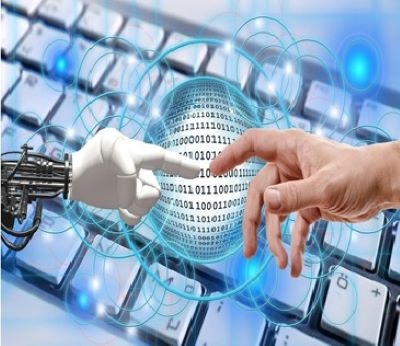Travel, tourism and hospitality are among the most high-touch industries as it requires more human contacts, face-to-face interactions and physical presence than any other sector. Since the declaration of COVID-19 as a pandemic by the World Health Organisation (WHO), this industry has been massively impacted by lockdowns. New norms of physical distancing and travel bans have brought the industry to a halting stage. Consequently, the usability of robotics, automation and artificial intelligence (AI) are gaining more popularity and adaptability in tourism and hospitality industry than ever before. Due to this, human presence is decreasing, and man-to-robot interactions are increasing at public places such as airports, transportation systems, hotels, restaurants, and communities in general. Socially intelligent robots, self-directed vehicles, drones, and other high-tech equipments are increasingly utilized in many service-providing sectors in general and tourism and hospitality in particular.
Historical facts confirm that a crisis brings technological innovations and developments with itself. So, has happened in the current COVID-19 situation. The present crisis has brought an opportunity in disguise in artificial intelligence (AI) and other technological advancements that have opened new prospects for robotics in the travel, tourism and hospitality industries. The advent of artificial intelligence has made robots socially intelligent and emotionally mature. Socially intelligent robots can decode emotional signals and respond like human beings. They interact with humans using artificial intelligence (AI). These robots are performing a number of tasks in travel, tourism and hospitality, such as providing direction to tourists and needful information, checking in and out from hotel rooms, cleaning hotel rooms and airport premises, delivering food, luggage, and other amenities to guests, providing safety and security services and some other routine work.
Drones (flying robots) are being used to sterilize overly populated tourist places. They are useful in routine or non-routine tasks using ultraviolet (UV) to disinfect and can detect high-risk areas that are hard to track by the human eye. In Hawaii, one of the states of the United States of America, drones are being used to convey instructions related to social distancing in public areas, including the scenic beaches. Autonomous vehicles (self-driving cars) are gradually being accepted to transmit tourists and local people to their respective destinations timely and safely. There are many hotels in the world that are operated majorly by robots. The Henn Na Hotel in Nagasaki, Japan, is one of them. The robots are handling a number of tasks, from carrying luggage and guiding guests to cleaning rooms and pouring coffee. These robots are able to find out places to visit, dine, and entertain. At the Hema restaurant, China robots do not only cook the food but also deliver dishes to their customers.
The travel, tourism and hospitality industry is considered high-touch, turning into high-tech due to technological advancement and robotic adoption. COVID-19 has broadened the scope of robotics in the industry. If recent robotics development continues, it is estimated that the 2030s will automate one-quarter of the USA’s hospitality jobs. Tourist experience may also change in the future due to the high adaptability of robotics in tourism and hospitality. The relationship of “tourists-guides-destinations” will include “tourists-robots-destinations” in a post-COVID-19 world.
(This article is written by Professor Sheeba Hamid, Coordinator (Master of Tourism and Travel Management), Department of Commerce, Aligarh Muslim University and Mohd Azhar, UGC-Senior Research Fellow, Department of Commerce, Aligarh Muslim University. The opinions expressed within this article are personal opinions of the authors.)







